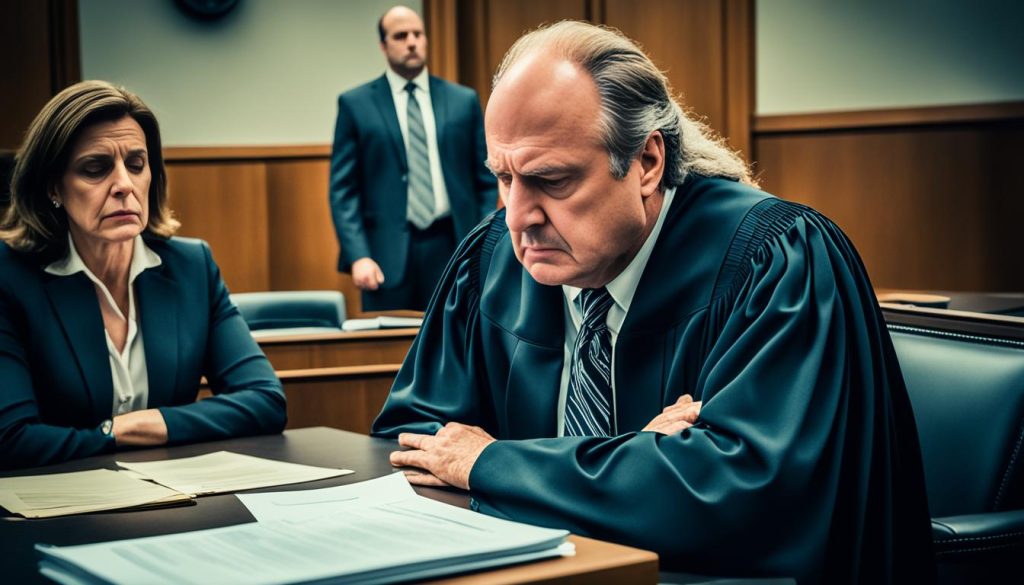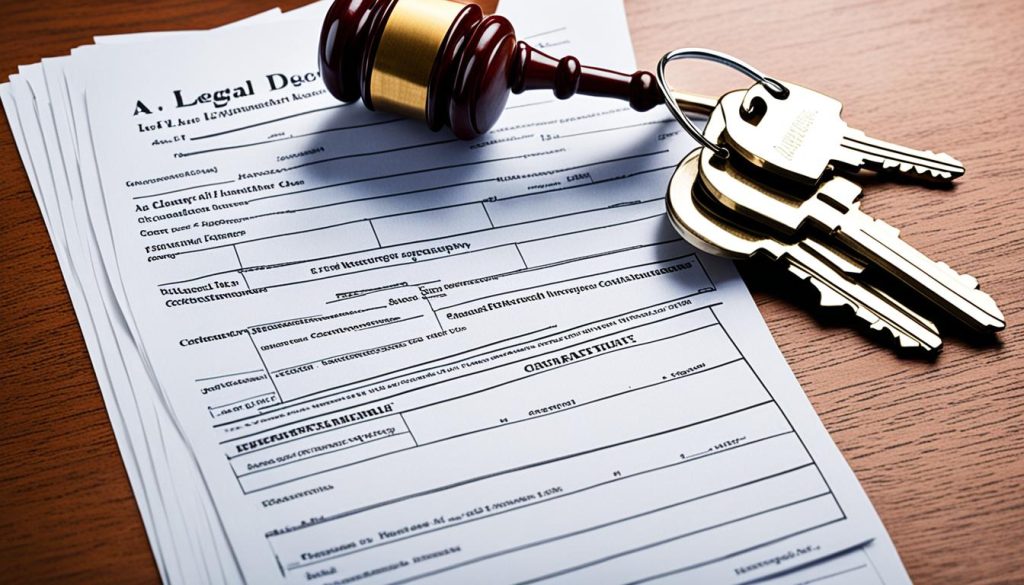The Matrimonial Causes Act 1973 is a key piece of family law in the UK. It brings together laws on marriage, maintenance, and child matters. This act covers divorce, nullity of marriage, and other family law issues. It deals with divorce grounds, property rights, child care, and separation.
This act is vital for protecting people in divorce, separation, and annulment cases. It sets rules for financial matters, child care, and other issues after a marriage ends.
The act ensures fair outcomes in divorce and separation cases. It looks at divorce, finances, child welfare, and separation. This article will explain how the act works and its main points.
Overview of the Act Matrimonial Causes Act 1973
The Matrimonial Causes Act 1973 is a key piece of family law in the UK. It brings together laws on marriage, maintenance, and declarations of marriage validity. It covers divorce, nullity of marriage, and other family matters. It looks at divorce grounds, procedures, property rights, child arrangements, and separation.
Purpose and Scope
This act aims to make the process of ending a marriage clear and straightforward. It deals with divorce, nullity, and other family issues. It includes the reasons for divorce, how to get a divorce or separate, dividing property, child care, and separation grounds.
It replaced the old Matrimonial Causes Act of 1857. It was made after World War II, when more people were getting divorced. This led to changes in divorce laws through the Divorce Reform Act of 1969.
Divorce needs a year of marriage and proof of breakdown. There are five reasons for this: adultery, bad behaviour, desertion, two years’ separation with agreement, or five years’ separation. It also covers property, money, children, and separation, offering a full legal framework for family disputes.
| Key Provisions of the Matrimonial Causes Act 1973 |
|---|
|
There have been criticisms of the Matrimonial Causes Act 1973. The Law Commission found the divorce laws confusing and unfair. They suggest reform is needed. The Family Law Act 1996 was not passed, but the Lord Chancellor sees the current system as complex and harmful to families and children.

Divorce and Dissolution of Marriage
The Matrimonial Causes Act 1973 explains the reasons for divorce in the UK. The main reason is the marriage breaking down beyond repair. This can happen through adultery, unreasonable behaviour, desertion, or being apart for two years with agreement or five years without agreement.
The Divorce, Dissolution and Separation Act 2020 changed this. It brought in a no-fault divorce system. Now, couples can divorce without proving fault.
Procedures and Requirements
The Matrimonial Causes Act 1973 details how to get a divorce or end a marriage in the UK. You must include a statement that the marriage is beyond repair. There’s a 20-week wait before applying and another 6 weeks before the divorce is final.
The new Act of 2020 made some changes. It changed the “Divorce Petition” to the “Application for Divorce Order.” It also renamed the “Decree Nisi” and “Decree Absolute” to “Conditional Order of Divorce” and “Final Order of Divorce,” respectively.
This Act also allows for trying to reconcile and the Queen’s Proctor to step in. It lets couples apply for divorce together if they want. This gives them more options.

Now, there’s an online way to apply for divorce. This makes it easier for people and the courts. The Act also says email can be used to serve divorce papers.
Property Rights and Financial Provisions
The Matrimonial Causes Act 1973 gives the court the power to decide on dividing property and financial matters when a marriage ends. It can order the transfer of property, settle property for the benefit of the spouses and their kids, and change or end interests in pre-marriage or post-marriage settlements.
Property Adjustment Orders
Property adjustment orders are key in the financial aspects of the Matrimonial Causes Act 1973. They let the court decide how to split the couple’s assets, like property, when a marriage ends.
The court has a lot of power but must be careful, especially when it comes to children over 18. It looks at the financial situation of both parties, their needs, and their past lifestyle to make fair decisions.
Common types of property adjustment orders include:
- Orders for the transfer of property from one spouse to the other
- Orders for the settlement of property for the benefit of the spouses and their children
- Orders for the variation or extinguishment of interests in any ante-nuptial or post-nuptial settlements
These orders are vital for a fair split of the couple’s assets during divorce, considering each case’s unique details.

Child Arrangements and Welfare
The Matrimonial Causes Act 1973 deals with child arrangements and welfare during divorce and marriage breakdown. It doesn’t go into details but highlights the importance of considering children’s best interests. This is when deciding on property and financial matters.
The court can make orders to ensure children’s wellbeing and care during a marriage breakdown. When deciding on child arrangements, the court looks at several factors. These include:
- The financial needs of the child
- The child’s education and training plans
- The responsibility for the child’s maintenance, particularly if a party to the marriage is not the biological parent
The court’s main goal in financial cases is the welfare of children under 18 and maintaining the family’s pre-divorce lifestyle. This ensures children’s needs are a top priority.
The Act also looks at how long the marriage lasted when dividing assets. Short marriages, under five years, usually mean assets are split equally if there are no kids. This is true unless there are other factors at play.
In the end, the Matrimonial Causes Act 1973 aims to protect children’s welfare. It ensures their best interests guide decisions in divorce and marriage dissolution.

Judicial Separation and Ancillary Relief
The Matrimonial Causes Act 1973 gives couples a choice – judicial separation instead of divorce. This lets spouses live apart without ending their marriage. The reasons for judicial separation are like those for divorce, including adultery, unreasonable behaviour, and desertion.
Grounds for Judicial Separation
If a couple wants judicial separation, the court might give ancillary relief. This means orders on dividing property, financial support, and child care. These orders are given during judicial separation, not a full divorce.
- Adultery
- Unreasonable behaviour
- Desertion
The court looks at many things when deciding on financial support. This includes the income, potential earnings, property, and money of both people. It also looks at their financial needs, debts, and duties.
There are different kinds of financial support orders. These can be regular payments, securing payments, paying off debts, or helping with children’s needs. There are rules about helping children over eighteen.
The court can make orders for children’s benefit at any time. It can also make more orders for them within certain limits.

Judicial separation is a special choice under the Matrimonial Causes Act 1973. It gives couples a way to live apart legally while still dealing with property and money issues.
Conclusion
The Matrimonial Causes Act 1973 has been a key law in the UK for fifty years. It deals with divorce, ending marriages, and legal separation. It makes sure everyone gets a fair deal in matters like property, money, and child care.
Even though it has changed little, the act has seen updates with the introduction of no-fault divorce in 2022. Now, there’s a call for more changes. The Law Commission of England and Wales plans to review divorce laws in 2024. They want to see if the laws still meet the needs of those going through divorce.
The Matrimonial Causes Act 1973 is still vital in the UK’s family law. It helps guide people through the tough times of ending a marriage. With ongoing reviews, it aims to ensure divorce and separation are fair for everyone involved.
FAQ
What is the purpose and scope of the Matrimonial Causes Act 1973?
This act makes ending a marriage easier and more straightforward. It covers divorce, declaring a marriage invalid, and other family law matters. It includes rules on why you can divorce, how to get a divorce, and what happens to property and money.
What are the grounds for divorce under the Matrimonial Causes Act 1973?
The main reason for divorce is when a marriage breaks down beyond repair. This can happen through adultery, bad behaviour, leaving each other, or being apart for two or five years. These are the main reasons in the UK.
How does the Matrimonial Causes Act 1973 address property rights and financial provisions?
The act lets the court decide on dividing property and finances when a marriage ends. It can order property transfers, settle property for spouses and kids, and change or end settlements. The court must think about the children’s welfare when making these decisions.
How does the Matrimonial Causes Act 1973 address child arrangements and welfare?
The act focuses on what’s best for children when a marriage ends. It doesn’t give details on child arrangements but says the court must consider the children’s best interests. The court can make orders to ensure children’s wellbeing and care.






